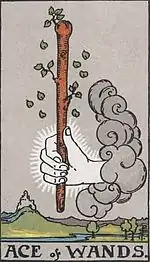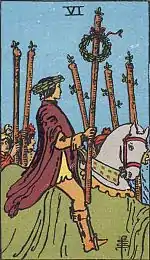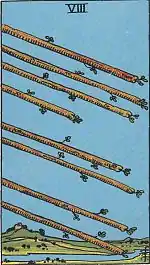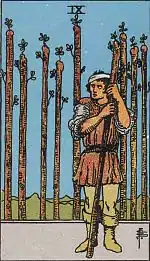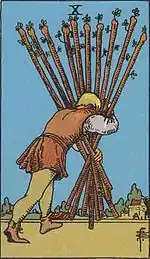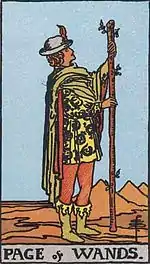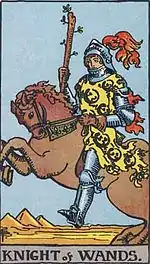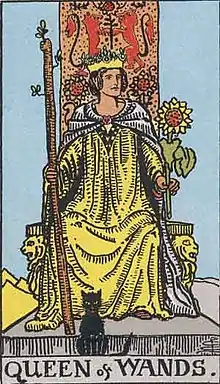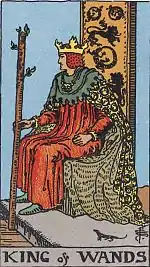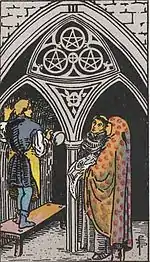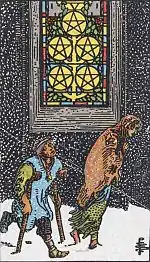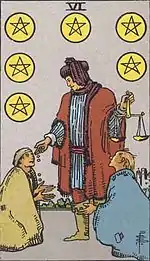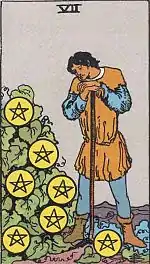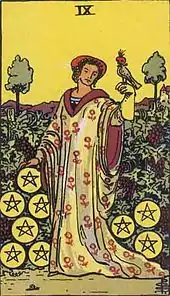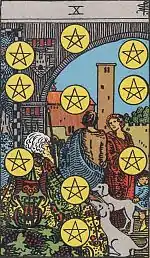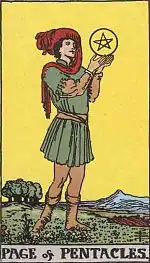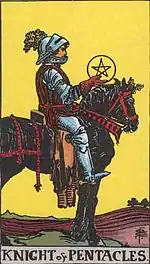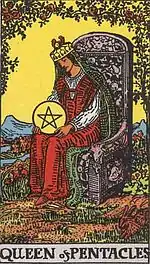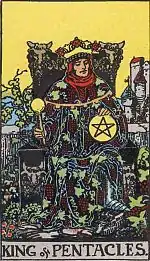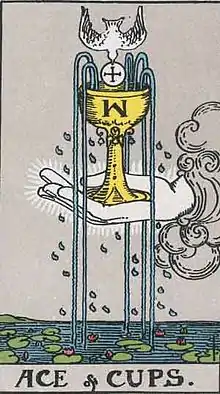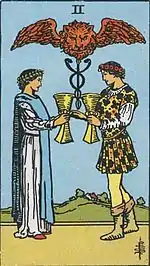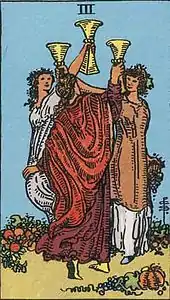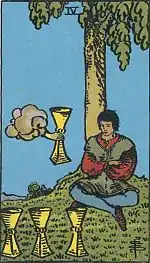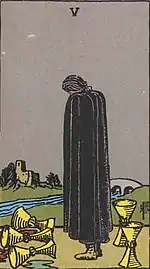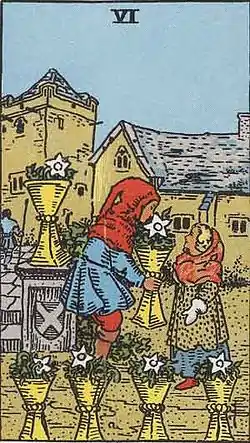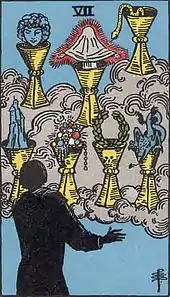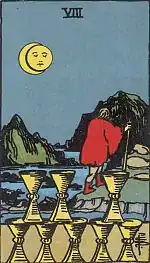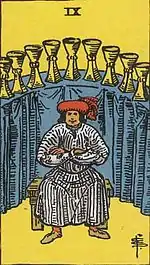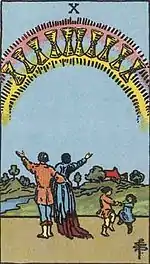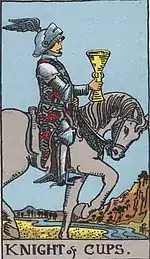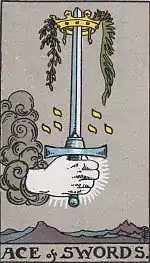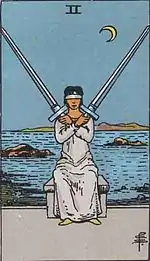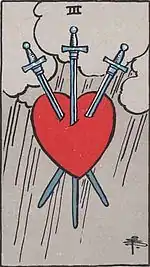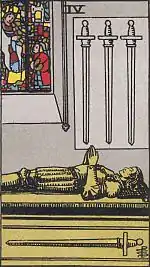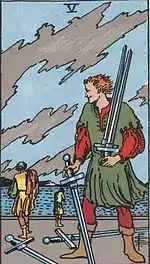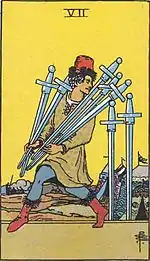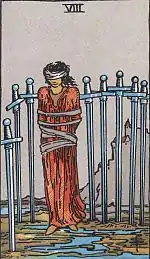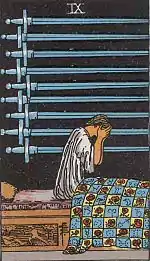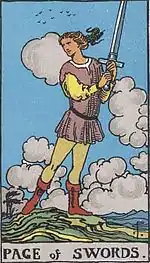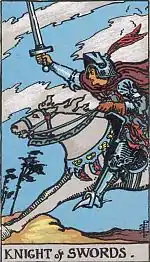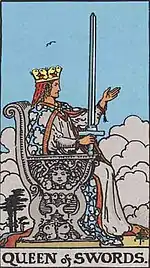Rider-Waite tarot deck
The Rider-Waite tarot deck, originally published 1909, is widely considered the most popular tarot deck for tarot card reading.[1][2] Other names for this deck include the Waite-Smith,[3] Rider-Waite-Smith,[4][5] or Rider tarot deck.[4] The cards were drawn by illustrator Pamela Colman Smith from the instructions of academic and mystic A. E. Waite and were originally published by the Rider Company. The deck has been published in numerous editions and inspired a wide array of variants and imitations.[6][7]
Overview
While the images are simple, the details and backgrounds feature abundant symbolism. Some imagery remains similar to that found in earlier decks, but overall the Waite-Smith card designs represent a substantial departure from their predecessors. The Christian imagery of previous decks was toned down; for instance, the "Pope" card became the "Hierophant" and the "Papess" became the "High Priestess". The Minor Arcana is illustrated with allegorical scenes by Smith, where earlier decks (with a few rare exceptions) had simple designs for the Minor Arcana.[8]
The symbols and imagery used in the deck were influenced by the 19th century magician and occultist Eliphas Levi,[9][10] as well as by the teachings of the Hermetic Order of the Golden Dawn.[11] In order to accommodate the astrological correspondences taught by the Golden Dawn, Waite introduced several innovations to the deck. He switched the order of the Strength and Justice cards so that Strength corresponded with Leo and Justice corresponded with Libra.[12][13] He also changed the Lovers card to depict two people instead of three in order to reinforce its correspondence with Gemini.[12]
Major Arcana
 0 – The Fool
0 – The Fool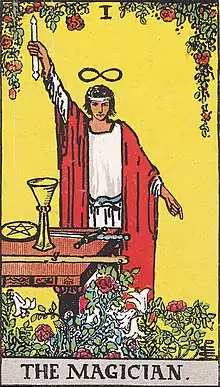 I – The Magician
I – The Magician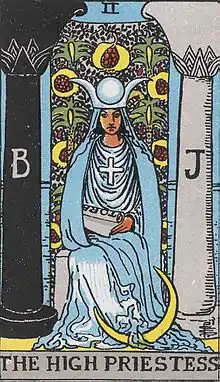 II – The High Priestess
II – The High Priestess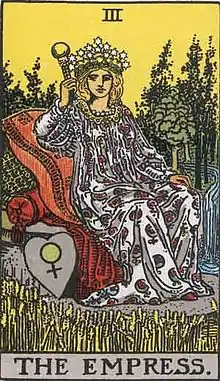 III – The Empress
III – The Empress IV – The Emperor
IV – The Emperor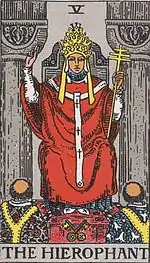 V – The Hierophant
V – The Hierophant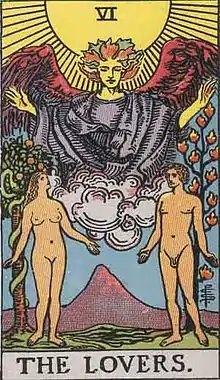 VI – The Lovers
VI – The Lovers VII – The Chariot
VII – The Chariot VIII – Strength
VIII – Strength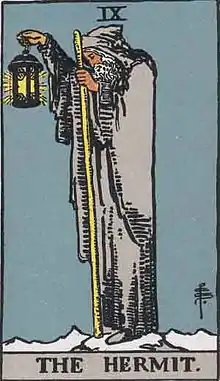 IX – The Hermit
IX – The Hermit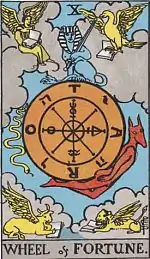 X – Wheel of Fortune
X – Wheel of Fortune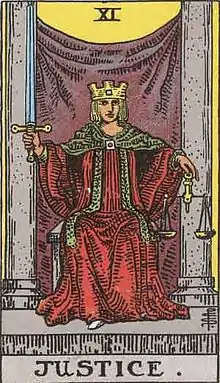 XI – Justice
XI – Justice XII – The Hanged Man
XII – The Hanged Man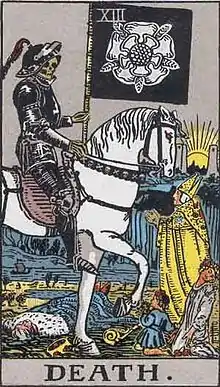 XIII – Death
XIII – Death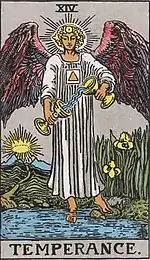 XIV – Temperance
XIV – Temperance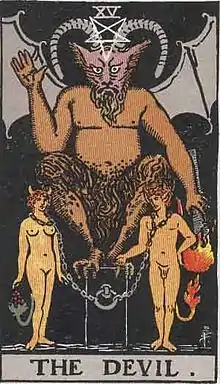 XV – The Devil
XV – The Devil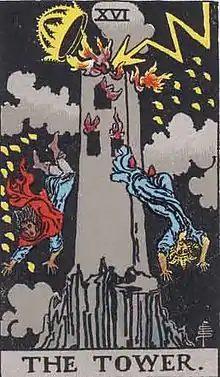 XVI – The Tower
XVI – The Tower XVII – The Star
XVII – The Star XVIII – The Moon
XVIII – The Moon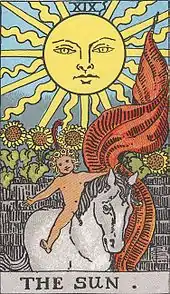 XIX – The Sun
XIX – The Sun XX – Judgement
XX – Judgement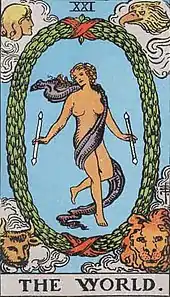 XXI – The World
XXI – The World
Publication
The cards were first published in December, 1909, by the publisher William Rider & Son of London.[8][12] The first print run was extremely limited and featured card backs with a roses and lilies pattern.[8][14] A much larger run was printed in March, 1910, featuring higher quality card stock and a "cracked mud" card back design. This edition, often referred to as the "A" deck, was published from 1910 to 1920.[15] Rider continued publishing the deck in various editions until 1939,[16] then again from 1971 to 1977.[17]
All of the Rider editions up to 1939 were available with a small guide written by A. E. Waite providing an overview of the traditions and history behind the cards, texts about interpretations, and extensive descriptions of their symbols. The first version of this guide was published in 1909 and was titled The Key to the Tarot. A year later, a revised version, The Pictorial Key to the Tarot, was issued that featured black-and-white plates of all seventy-eight of Smith's cards.
Editions by other companies
The success of the Rider-Waite deck spawned numerous reproductions by other companies. U.S. Games (now U.S. Games Systems) began publishing an authorized reproduction deck in the United States in 1971.[17] In the 1990s, they began publishing the Universal Waite deck, a version recolored by illustrator Mary Hanson-Roberts.[18]
To commemorate the 100th anniversary of the creation of the deck, U.S. Games Systems published the Smith-Waite Centennial Tarot Deck in 2009. This deck is a faithful reproduction of the original deck published in 1909 and uses the muted colors originally chosen by Smith.[19]
Copyright status
Some controversy exists around the copyright status of the deck.[20] Under UK copyright law, works fall into the public domain 70 years after the death of the author,[21] which may refer to either Waite (1942) or Smith (1951). Australian copyright law currently has the same term under a 2004 amendment; however, unlike in the UK's 1995 amendment, this law was not retroactive, and the deck therefore passed into the public domain 50 years after the author's death. In the United States, the deck fell into the public domain in 1966 (publication + 28 years + renewed 28 years), and thus has been available for use by American artists in numerous different media projects. U.S. Games Systems has previously claimed[22] that copyright over the deck expires in 2021, 70 years after the death of the author, in accordance with the 1998 Copyright Term Extension Act (which does not apply to works published prior to 1923). This claim has yet to be tested in a court of law.
References
- Giles, Cynthia (1994). The Tarot: History, Mystery, and Lore. New York: Simon & Schuster. p. 46. ISBN 0671891014.
- Visions and Prophecies. Alexandria, Virginia: Time-Life Books. 1988. p. 142.
- Katz, Marcus; Goodwin, Tali (2015). Secrets of the Waite-Smith Tarot. Llewellyn Publications. ISBN 0738741191.
- Michelsen, Teresa (2005). The Complete Tarot Reader: Everything You Need to Know from Start to Finish. Llewellyn Publications. p. 105. ISBN 0738704342.
- Graham, Sasha (2018). Llewellyn's Complete Book of the Rider-Waite-Smith Tarot. Llewellyn Publications. ISBN 073875319X.
- Kaplan, Stuart R. (2018). Pamela Colman Smith: The Untold Story. Stamford, Connecticut: U.S. Game Systems. p. 371. ISBN 9781572819122.
- Dean, Liz (2015). The Ultimate Guide to Tarot: A Beginner's Guide to the Cards, Spreads, and Revealing the Mystery of the Tarot. Beverly, Massachusetts: Fair Winds Press. p. 9. ISBN 1592336574.
- Kaplan, Stuart R. (2018). Pamela Colman Smith: The Untold Story. Stamford, Connecticut: U.S. Game Systems. pp. 74–76. ISBN 9781572819122.
- Place, Robert M. (14 May 2015). "Levi's Chariot and Smith's Chariot Versus Waite's Chariot". Tarot & Divination Decks with Robert M Place. Retrieved 21 August 2020.
- Place, Robert M. (7 August 2015). "Smith, Waite, Levi, and the Devil". Tarot & Divination Decks with Robert M Place. Retrieved 21 August 2020.
- Decker, Ronald; Dummett, Michael (2019). A History of the Occult Tarot. London: Duckworth. pp. 139–141. ISBN 9780715645727.
- Jensen, K. Frank (2005). "The Early Waite-Smith Tarot Editions". The Playing-Card. The International Playing Card Society. 34 (1): 26–50.
- Decker, Ronald; Dummett, Michael (2019). A History of the Occult Tarot. London: Duckworth. pp. 82–84. ISBN 9780715645727.
- "Rider 'Roses & Lilies' deck (1909)". House of White Tarot Museum & Research Library. 15 September 2015. Retrieved 18 August 2020.
- "Rider 'A deck' (1910 through 1920)". House of White Tarot Museum & Research Library. 12 September 2015. Retrieved 18 August 2020.
- "Rider 'D deck' (estimated 1920 through 1939)". House of White Tarot Museum & Research Library. 15 September 2015. Retrieved 18 August 2020.
- "1976-77 Blue Box Rider deck". House of White Tarot Museum & Research Library. 22 July 2017. Retrieved 18 August 2020.
- "Universal Waite® Tarot Deck". U.S. Games Systems, Inc. Retrieved 18 August 2020.
- "Smith-Waite Centennial Tarot Deck". U.S. Games Systems, Inc. Retrieved 14 November 2016.
- "The Rider-Waite Tarot Deck and the Public Domain". 2012-12-24.
- "Ownership of copyright works - Detailed guidance". GOV.UK. 2014-08-19. Retrieved 2016-09-28.
- "Stuart Kaplan: The Wisest of Fools".
External links
 Learning materials related to A Psychological Interpretation of the Tarot at Wikiversity
Learning materials related to A Psychological Interpretation of the Tarot at Wikiversity
